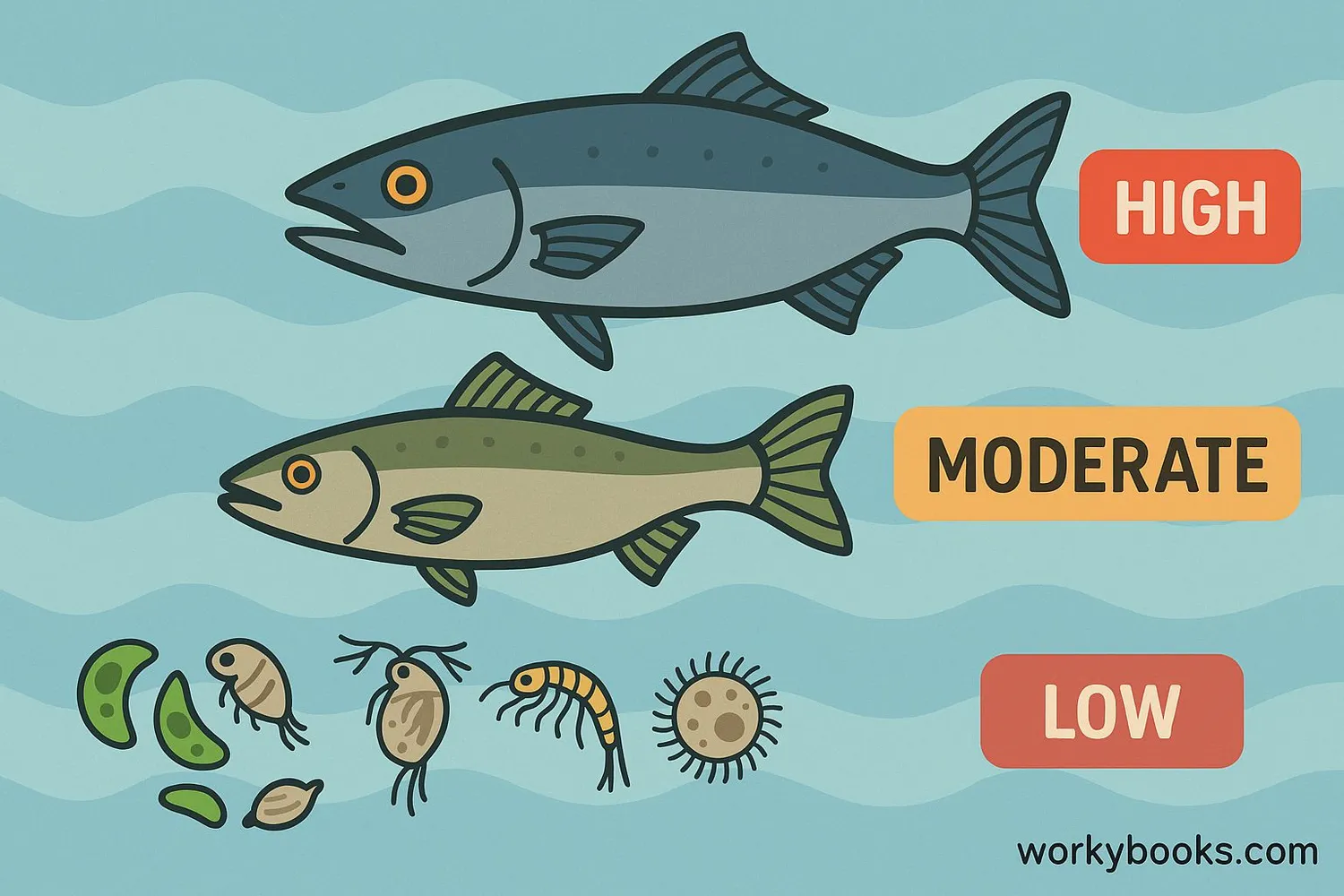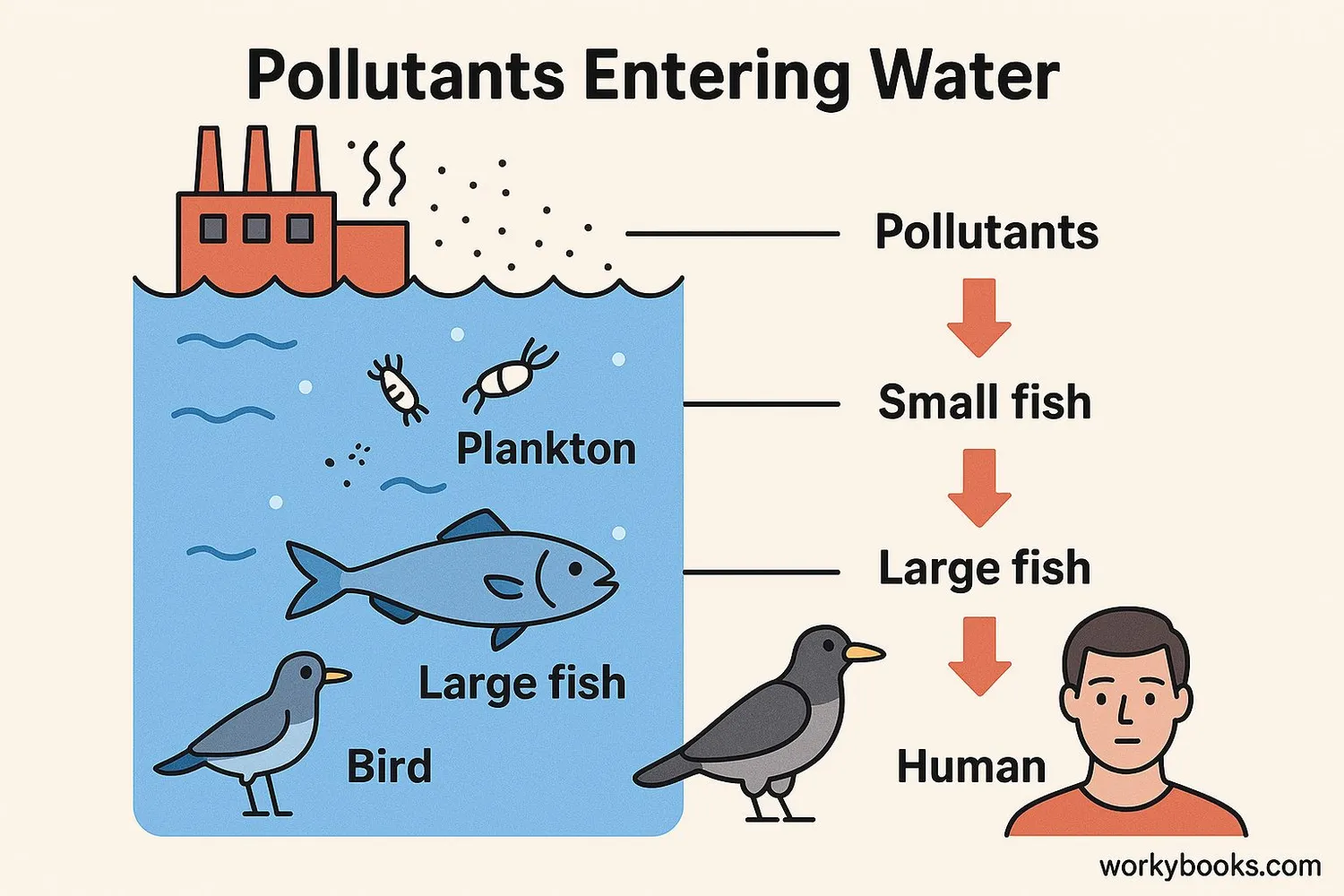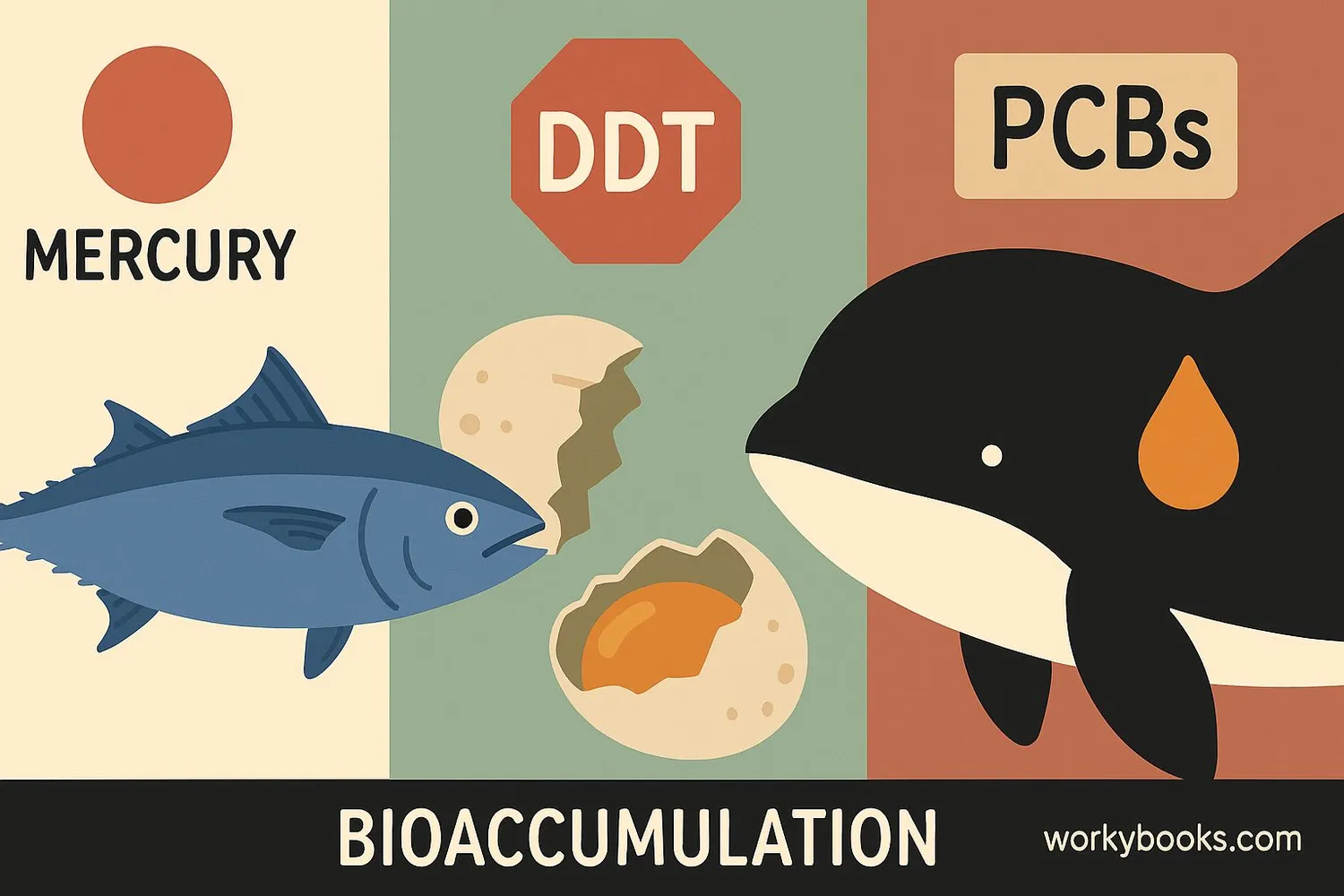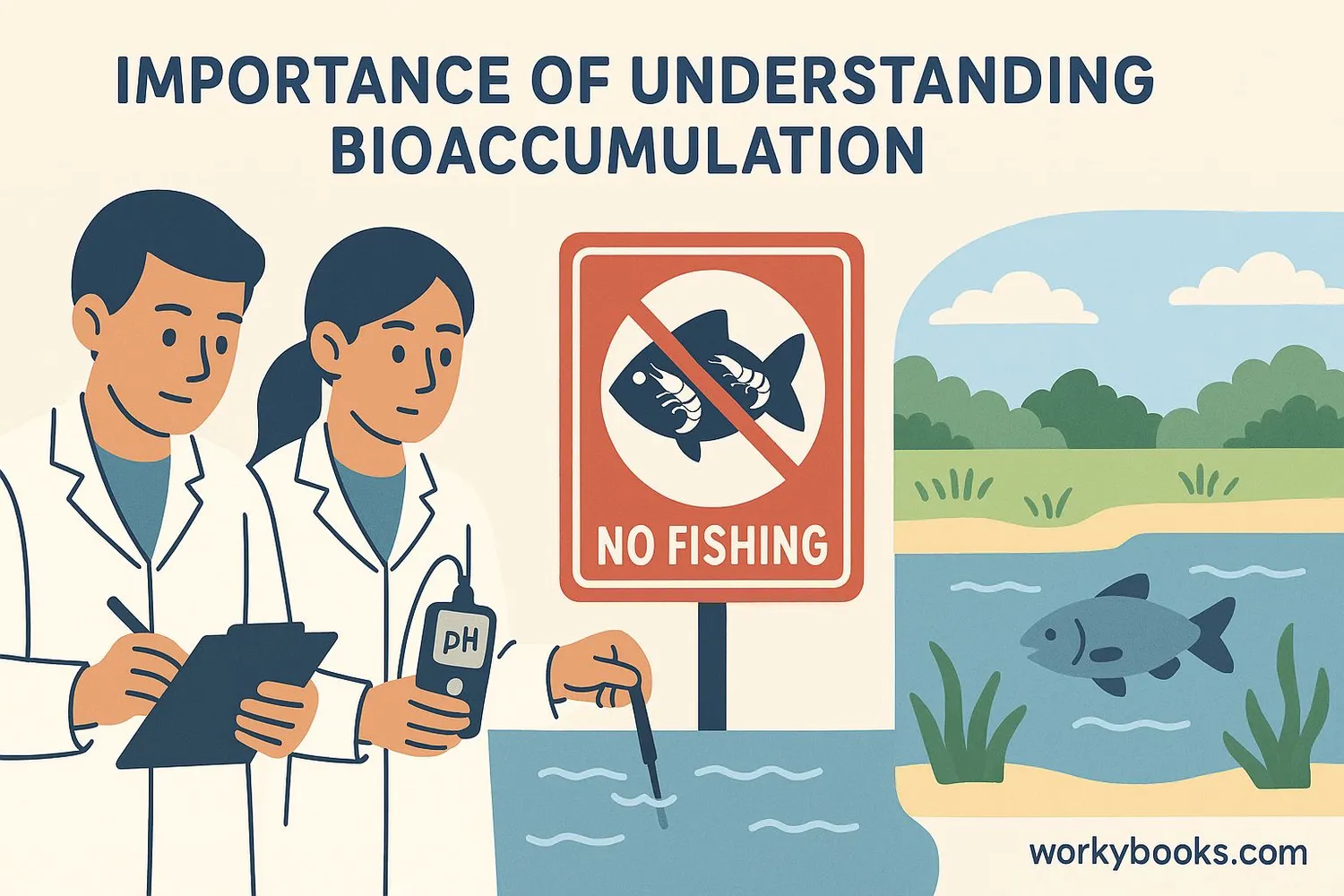Bioaccumulation - Definition, Examples, Quiz, FAQ, Trivia
Learn how substances build up in living organisms and affect ecosystems
What is Bioaccumulation?

Bioaccumulation is the process where substances build up in living organisms over time. These substances can include helpful nutrients or harmful pollutants like heavy metals and chemicals.
Think of it like a sponge that soaks up water. Some organisms absorb substances from their environment faster than they can get rid of them. This means the concentration of these substances increases inside their bodies over time.
When these substances are harmful, like mercury or pesticides, they can cause health problems for the organism and for animals (including humans) that eat them.
Key Term
Bioaccumulation refers to the gradual buildup of substances in an organism, while biomagnification describes how these substances become more concentrated as they move up the food chain.
How Bioaccumulation Works

Bioaccumulation occurs through several pathways. Organisms can absorb substances directly from their environment (like water or soil) or by consuming other organisms that already contain these substances.
Uptake
Substances enter organisms through eating, drinking, or breathing
Storage
Substances are stored in tissues like fat or bones
Accumulation
Substances build up faster than the organism can eliminate them
Transfer
Substances move to predators when they consume contaminated prey
Some substances are called persistent organic pollutants because they don't break down easily in the environment. These include certain pesticides and industrial chemicals that can remain in ecosystems for many years, continuing to accumulate in living organisms.
Biomagnification
When substances become more concentrated at each step of the food chain, this is called biomagnification. Top predators often have the highest concentrations of these substances.
Examples of Bioaccumulation

Bioaccumulation happens with many different substances in various ecosystems. Here are some important examples:
Mercury in Fish
Mercury from industrial pollution accumulates in fish, especially large predatory species like tuna and swordfish
DDT in Birds
The pesticide DDT accumulated in birds, causing thinning eggshells and population declines
PCBs in Marine Mammals
Industrial chemicals called PCBs accumulate in whale and dolphin blubber
These examples show how human activities can introduce substances into environments that then move through food chains, sometimes with harmful effects on wildlife and people.
Heavy metals like lead and cadmium can also bioaccumulate, posing risks to organisms that consume contaminated water, plants, or animals.
Why Bioaccumulation is Important

Understanding bioaccumulation is crucial for several reasons:
Human Health
Helps us understand risks from consuming contaminated food and water
Ecosystem Protection
Allows us to protect wildlife from harmful substance buildup
Regulation Guidance
Helps create rules to limit pollution and protect environments
By studying bioaccumulation, scientists can:
• Identify which substances are likely to accumulate in living things
• Predict how these substances will move through food chains
• Develop guidelines to protect human health (like fish consumption advisories)
• Create regulations to control the use of persistent pollutants
This knowledge helps us make smarter choices about how we use chemicals and how we protect our environment.
Bioaccumulation Quiz
Test your knowledge about bioaccumulation with this quiz. Answer all 5 questions to see how much you've learned.
Frequently Asked Questions
Here are answers to some common questions about bioaccumulation:
Interesting Facts About Bioaccumulation
Discover some fascinating information about bioaccumulation:
Historical Discovery
The harmful effects of bioaccumulation were famously discovered with the pesticide DDT. Rachel Carson's book "Silent Spring" brought attention to how DDT accumulated in birds, causing eggshell thinning and population declines.
Whale Concerns
Some whale species have been found with surprisingly high levels of mercury and other heavy metals in their bodies, accumulated over their long lifespans through their diet of contaminated fish and squid.
Arctic Contamination
Even remote Arctic regions show evidence of bioaccumulation. Polar bears have been found with high levels of pollutants that traveled long distances through air and water currents before entering the food chain.
Long-lasting Effects
Some persistent organic pollutants (POPs) can remain in the environment for decades, continuing to accumulate in living organisms long after they were originally released.


